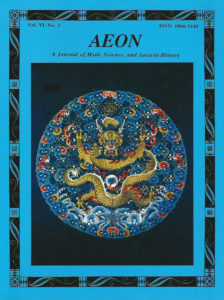
Sample Articles:
“Mythical imagery of the prehistoric era tells us much about humanity—its concepts of the structure of the cosmos, of the beginning of the world and of human, plant and animal life, and also its struggle and relations with nature. It cannot be forgotten that through myth, images and symbols man comprehended and manifested his being.” (Marija Gimbutas)
Why should anyone care about ancient myth? The answer, quite simply, is that for untold millennia myth served as the primary means of recording and communicating mankind’s most treasured ideas regarding the nature of the cosmos and man’s relationship to the gods. In this sense, ancient myth represents an intellectual heirloom encoding and encapsulating the natural history of our species and is thus a ripe field of study for all students of evolutionary psychology.
Modern scholars have defined myth as a sacred history purporting to describe the origin of the world and mankind’s various cultural institutions. Mircea Eliade would emphasize myth’s central function in ancient (and so-called primitive) cultures:
“One fact strikes us immediately: in such societies the myth is thought to express the absolute truth, because it narrates a sacred history; that is, a transhuman experience revelation which took place at the dawn of the Great Time, in the holy time of the beginnings (in illo tempore). Being real and sacred, the myth becomes exemplary, and consequently repeatable, for it serves as a model, and by the same token as a justification, for all human actions. In other words, a myth is a true history of what came to pass at the beginning of Time, and one which provides the pattern for human behaviour…Clearly, what we are dealing with here is a complete reversal of values; whilst current language confuses the myth with ‘fables’, a man of the traditional societies sees it as the only valid revelation of reality.”
Countless myths, according to Eliade, commemorate the Creation, the latter regarded by ancient man as something that “really happened, as an event that took place, in the plain sense of the term.” Intimately related to this widespread idea that Creation was something actually experienced and witnessed is a corollary belief—that a great catastrophe brought down the curtain on the paradisiacal conditions which formerly prevailed during a remembered Golden Age. Yet as insightful and compelling as Eliade’s analysis of myth proves to be, there is one gaping hole in the argument: No explanation is offered for the origin of the specific mythical themes uncovered–e.g., the ordering of the cosmos, the dragon-combat, the primeval hieros gamos, the epoch-ending catastrophe, etc. Equally problematic for conventional theories of ancient myth is their general inability to explain the recurrence of mythical themes around the globe. The renowned anthropologist Claude Lévi-Strauss emphasized this problem in an important essay on myth many years ago: “How are we going to explain the fact that myths throughout the world are so similar?”
Especially disconcerting are those peculiar details of ancient myth that don’t make sense in the real world—flying dragons; the dwarf-like hero who suddenly assumes a gigantic form; the birth of the warrior-hero from a flower; the Thundergod’s lightning-hurling eye; and countless others. One is naturally inclined to attribute such motifs to creative imagination and fictional storytelling, but this “explanation” runs up against an insuperable difficulty: These seemingly irrational and biologically impossible motifs are likewise to be found around the globe. As Lévi-Strauss acknowledged, it is very difficult to understand how creative imagination can account for such widespread motifs:
“Mythic stories are, or seem, arbitrary, meaningless, absurd, yet nevertheless they seem to reappear all over the world. A ‘fanciful’ creation of the mind in one place would be unique—you would not find the same creation in a completely different place.”
There would appear to be but three possible explanations for the presence of such recurring anomalous motifs:
- They originated in creative imagination and subsequently became diffused around the globe;
- They are natural products of the human mind;
- They were inspired by extraordinary celestial events, observed and chronicled by ancient man the world over.
As it turns out, there is a wealth of evidence that the third explanation is the only one which accounts for the facts at hand and, indeed, it forms the cornerstone and central premise of the historical reconstruction offered here: Ancient myth encodes extraordinary natural events involving planetary bodies moving in close proximity to the Earth as witnessed by ancient man in the past 10,000 years.